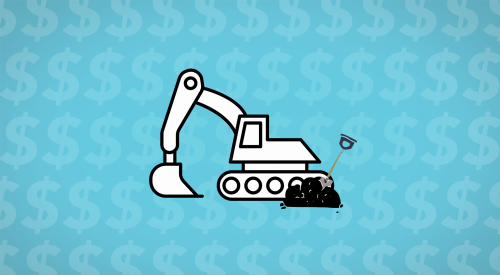For the residential construction industry, 2022 was a tumultuous year—with the ongoing supply crisis, rising material prices, and soaring mortgage rates. What can builders expect in the year ahead? Here are some insights and predictions from Russ Stephens, cofounder of Association of Professional Builders (APB), a business coaching company dedicated to improving the residential construction industry in Australia, Canada, New Zealand, and the U.S.
2023 PREDICTIONS FOR RESIDENTIAL CONSTRUCTION
Demand will decline.
During the pandemic, the industry saw a massive construction boom. Consumers had more money that they weren’t spending on services, and they had more time to spend in—and on—their homes. But with rising interest rates, demand will return to normal by the end of 2023, Stephens predicts. “Every time we see interest rates increase, the consumer capacity to borrow decreases.”
House prices might fall, but construction costs won’t.
As demand declines, so will home prices. “I expect to see house values decline throughout the year,” Stephens says. Amid easing demand, the costs of some materials such as lumber and steel might tick down, but any savings will be offset by the inflationary increases for other materials, he predicts.
Builders are struggling with mental health.
“One of the most alarming things” that APB found in its recent survey of over 1,000 builders, Stephen says, was that 26% report their mental health deteriorated in 2022. That’s a significant portion of builders experiencing anxiety and depression. After the supply and staffing challenges of recent years, they’re just burnt out. “Builders have had to do two to three times what they normally would do for the same result.” (APB’s report on its survey will be released in March.)
Builders will carry pandemic-era lessons with them.
In 2022, builders got better at planning and ordering in advance to mitigate supply delays. In its builder survey, APB found that 58% of construction projects were delivered on time in 2022. “That’s quite incredible when you consider all the challenges that builders faced,” Stephens says. “It’s a real testament to the way builders adapted to the challenges.”
Builders also learned not to overextend themselves: Many are now more likely to sign contracts only when they can start the projects. And that has protected their margins—which increased in 2022 compared to 2021. In the U.S., that was helped by the fact that two-thirds of builders have cost-escalation clauses, which are far less common in other countries, Stephens notes.
The industry will continue to become more professional.
Builders’ professionalism is on the rise—whether that’s their financial savvy, the way they operate their businesses, or the way they recruit and train their staff. More builders now have documented processes and are creating business plans for the next three to five years, Stephens says. “There are very clear signs that the residential construction industry is becoming more professional year on year.”
Lastly, a piece of advice for the year ahead: Marketing matters.
According to the APB survey, the biggest challenge builders say they faced in 2022 was a lack of quality leads. Despite this, 64% of builders never created blog posts, 60% didn’t email their databases, and social media activity was down in 2022 compared to 2021. “The solution is very clear and attainable,” Stephens says: Builders need to create content, connect with their databases, and be active on social media.
“For the first half of 2022, it wasn’t hard to be a successful builder company,” Stephens says. But for the year ahead, builders need to focus on their marketing so they can attract more clients (and can be more selective with them). “Even in good times, it’s important to keep demand exceeding supply,” he says.















